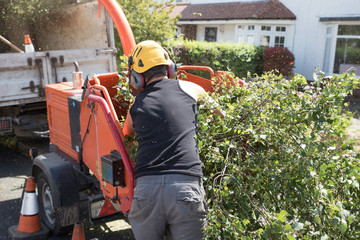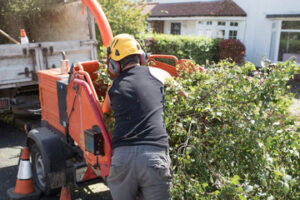Landscape Lighting Orlando takes the hard work you’ve put into your yard and puts it on display after dark. It also increases safety and security.
A good layout plan is the key to creating a successful landscape lighting system. Start by sketching the property and marking where each fixture will go.

There is much to be said about how light can change a room’s mood. The same is true for your landscape. You can use lighting to highlight specific features of your yard and create shadows that add depth. It’s also a great way to showcase your plants and flowers at night. And it’s not just a decorative thing; using lighting to set a mood is a way to improve your home’s energy efficiency.
When selecting your lighting, you should consider the fixture’s brightness and the color temperature. This will help you get the most out of your system and create a pleasing ambiance for your landscape. You should also ensure your fixtures are rated for outdoor use and will stand up to the elements.
Many people use LED lights for landscape lighting because of their efficacy. Unlike standard incandescent bulbs, LEDs can produce several lumens per watt, which consumes less energy to make the same brightness level.
Another important aspect of your landscape lighting is the design. You can choose from different fixtures, such as spotlights, floodlights, and postlights. You can also use integrated fixtures with an LED board built into them and don’t require a separate bulb.
A well-designed landscape will not only improve your enjoyment of the outdoors, but it can increase your property value. According to a recent study, potential home buyers rate landscape lighting as one of the most desirable exterior features when looking at homes. This is because a professionally installed landscape makes the house feel inviting and gives the impression that it has been well-maintained.
With a little planning, you can have your dream backyard illuminated by nightfall. Start by setting a budget and creating a layout of the area you wish to light. This will help narrow your options and save you time during installation. Once you have decided on your lighting plan, it is important to stick with it to ensure the project stays within your budget.
Landscape lighting accents can bring a new dimension to special features like fountains, water gardens, and trees. They can also highlight your home, architectural features, or outdoor living spaces, adding a sense of drama and flair to your outdoor design.
There are many different types of landscape lighting fixtures to choose from, and they come in a wide range of styles, finishes, and sizes. The most common include spotlights, well lights, low-voltage flood lights, and hardscape lights. Regardless of the fixture type, choosing the right bulb for the application and ensuring that the finish is rated for outdoor use are important.
Highlighting is a popular landscape lighting technique that showcases plants and other dense features using the dark outline created by light. This is typically accomplished by placing the fixture at or near the base of the feature aimed towards an adjacent wall. Shadowing is a similar technique but uses a softer, more subtle effect. This is often achieved by placing the light closer to the feature or aiming two or more lights at it so that the crossing beams reduce the harsh shadows caused by one fixture alone.
Grazing is another common technique that creates dimension by “washing” the surface of a feature with light. This often highlights a textured surface, such as stone walls or a row of shrubs. Light sources with wider beam spreads (such as LED MR16 lamps) are recommended to achieve a grazing effect to minimize shadowing.
Finally, moonlighting is a technique that is used to create a soft, romantic glow by reflecting light off the surfaces of plants and trees. This is ideal for highlighting garden beds, statues, and other decor features.
Illuminating your landscape and architectural features after the sun goes down not only enhances the look of your property but also helps to increase your home’s safety, security, and overall value. A recent survey by the National Association of Home Builders found that landscaping is the most desirable upgrade when it comes time to sell a house.
One of the most common uses for landscape lighting is to highlight your walkways, stairs, or steps. This makes navigating after dark easier and helps keep guests safe from tripping or falling. It can also enhance your curb appeal by drawing attention to trees, plants, statues, and other features of your home’s exterior.
A well-lit walkway is a great deterrent for thieves, as it gives the impression that someone is home and watching over the property. In addition, lighting can illuminate dark areas of your yard that may be a blind spot for your security system, making it harder for criminals to hide and sneak up on your house or steal anything.
Pathway lights come in various styles, from simple fixtures to lanterns and glow orbs. They can be low voltage (12V) or line (120V). Low-voltage fixtures are safer for DIY installation since they require less wiring and can be safely buried in the ground. However, line voltage requires a licensed electrician to install.
When selecting your pathway lights, consider the style and size of your home and landscaping. Choose fixtures that match these elements and will not stand out or look out of place. You can even find fixtures that blend in with the surrounding foliage. Many of these lights come in sets, which is convenient if you need more than one. However, stick to the same fixture style throughout your landscape to give it a cohesive appearance.
You’ll be able to find fixtures that are either solar-powered or wired for power. Solar-powered fixtures require a direct source of sunlight to recharge, but they can be a good option if you want your landscape lighting to be completely maintenance-free. You will need a transformer to plug the lights into for wired fixtures and a cable that connects them all.
Once you’ve installed your landscape lights, ensure you can control them from anywhere in the world. Haven’s Stratus smart landscape lighting control is a convenient way to schedule and change the settings on your lights from any device. It’s easy to set up, with no complicated programming required.
There’s a reason landscape lighting has become popular for both beauty and security. Illuminated walkways and entrances help deter trespassers and make it safer for guests to move around your home at night. In addition, sufficient outdoor lighting makes it easier to keep an eye out for wildlife that may be wandering through your property. Motion sensor lights are an excellent way to deter squirrels, raccoons, and other animals known to raid trash cans or chew through wires.
Landscape lighting also adds value to your home and is often a high-demand feature for potential buyers. A well-lit exterior offers a sense of safety, giving the impression that your house is more spacious and inviting.
The first step in designing your landscape lighting system is deciding what fixtures you want to use. The main fixture classes include spotlights, floodlights, and specialty lights. Spotlights, also known as uplights, are versatile and come in various beam widths and wattages. They can be used for grazing, shadowing, and uplighting trees, as well as highlighting other features of your landscaping. Flood lights are designed to illuminate a wider area with a single fixture, and they can be useful for lighting areas like side yards or garages. Specialty lights include everything from bistro lights to tiki torches and are great for illuminating outdoor entertaining spaces, water features, or other decorative elements.
Another important aspect of your landscape lighting design is to plan for the power supply. You can choose to use line voltage (120V), which requires a licensed electrician to install, or low-voltage (12V) landscape lighting, which is safe enough for homeowners to do it themselves. Once you have decided on a fixture class and power supply, you can begin planning the rest of your landscape lighting layout.
When choosing a landscape lighting company, it’s important to find one that has experience with both low-voltage and line-voltage design. Mike’s Landscape Lighting has years of experience with both types of systems, and we can help you determine which would be best for your home and yard.

